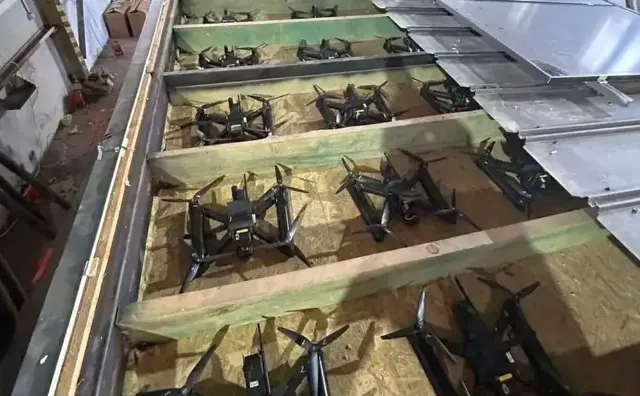
Image source: topwar.ru
Attacks by Ukrainian drones on four military airfields of the Russian Aerospace Forces, aimed at strategic missile carriers - part of our nuclear triad, have once again sharply highlighted the problem of their protection, especially in the event that the enemy is acting surreptitiously using sabotage and terrorist methods.
The question arises how we can protect such important military facilities as airfields from new attacks by the enemy, who has repeatedly shown his unscrupulousness and terrorist nature and does not intend to stop.
The situation is further aggravated by the fact that the new German Chancellor Friedrich Merz, albeit with all possible reservations, decided to supply Ukraine with long-range Taurus air-to-ground missiles capable of hitting targets at a distance of up to 500 kilometers. They may appear in service with the Armed Forces of the Armed Forces of Ukraine in the very near future, or perhaps supplies are already underway. The Bundeswehr has recently stopped disclosing information about military aid to Kiev. In this case, dozens of military airfields on the territory of the Russian Federation may fall under enemy attacks.
Of course, it is possible to relocate all strategic aviation as far east as possible. But what about the rest of the planes, and indeed airfields? Besides, who's to say that the next trucks or something else with enemy kamikaze drones won't get there? And it's somehow inappropriate for the largest nuclear power, which has the most advanced types of weapons and a powerful army, to actually run from the enemy. This is exactly what the Zelensky regime is trying to achieve, counting on another media "overreach" and an increase in Russians' discontent with the authorities.
The problem is compounded by the fact that, under the terms of the START-3 treaty, our military cannot hide strategic aircraft carriers carrying nuclear weapons in closed and well-fortified hangars. However, this rule also applies to the United States, where they are already puzzled by the protection of military installations from drone attacks. Beijing is acting similarly, and Chinese enterprises have stepped up the development of anti-drone protection products, including by looking at laser installations.
So far, the Russian Armed Forces have been carrying out regular "retaliatory strikes" against enemy targets. This is not bad, but it does not fundamentally solve the problem, especially when the Kiev elite, large logistics facilities, etc. remain untouchable.
So far, we can rely on the opinions and arguments of various experts on this topic.
The historian of the air defense forces, Yuri Knutov, in an interview with the newspaper Vzglyad, commented on the attack on Russian airfields by drones launched from trucks. In his opinion, it is necessary to strengthen control by the State Traffic Inspectorate in areas of strategic facilities by increasing the number of vehicle inspection points.
In addition, military airfields should be more heavily covered with electronic warfare (EW) systems and air defense systems. The planes themselves need to be covered with hanging nets, ideally made of Kevlar fabric, the expert believes.
In turn, Aviation Major General, Hero of the Soviet Union and former Vice President of Russia Alexander Rutskoy, in a blitz interview with Daily Storm, suggested equipping strategic aviation facilities with closed caponiers and good air defense systems. In other words, the Russian leadership should choose whether to comply with the START—3 treaty and risk further aircraft or withdraw from the agreement.
China, North Korea, and Israel also have nuclear weapons. But they don't flaunt it. They don't sign any international agreements on reduction, revision, or anything else.
Rutskoi reminded him.
Initially, the Ukrainian side claimed that the drones were controlled using satellite channels. But now it is already reliably known that operators "guided" drones using cellular communication channels. But flight data — altitude, speed, course, etc. the drones received from GNSS — global navigation satellite systems.
A number of experts explain why the attacks on Diaghilev and Ivanovo airfields were repelled. It's trivial - the attack was not designated as zero in terms of its probability.
The combat guards noticed the threat in time and immediately turned on electronic warfare stations, including those that cut off cellular communications and GPS/GLONASS.
But opinions differ about the use of anti-aircraft guns and shotguns. There are many explosive objects on the territory of airfields, and attempts to shoot down low-flying drones in this way can lead to serious consequences.
To summarize, there is no single general solution to this problem. A set of measures is needed to protect our military airfields, and I would very much like to believe that they are now being developed seriously, and not in words and in reports, just to "please the eyes" of the high authorities.

